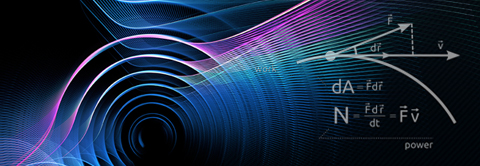| 날짜 | 2024-06-13 16:00 |
|---|---|
| 일시 | June 13th(Thur), 16:00 |
| 장소 | E6-2, #1323 |
| 연사 | Dr. Kouki Nakata (Japan Atomic Energy Agency) |
Dr. Kouki Nakata (Advanced Science Research Center, Japan Atomic Energy Agency)를 모시고 'Magnonic $\varphi$ Josephson junction and its non-Hermitian Josephson diode effect' 주제에 대한 세미나를 개최하고자 합니다.
물리학과 구성원 여러분들의 많은 참여 부탁드립니다.
--------------------------------------------------------------------------------------------------------------------
1) Time : at 16:00 on Jun 13, 2024
2) Venue : E6-2, Rm#1323
3) Speaker : Dr. Kouki Nakata (Advanced Science Research Center, Japan Atomic Energy Agency)
4) Talk Title : Magnonic $\varphi$ Josephson junction and its non-Hermitian Josephson diode effect
5) Abstract
- There has been a growing interest in non-Hermitian physics [1]. One of its main goals is to engineer dissipation and to explore ensuing functionality. Since magnons are intrinsically damped in magnets, its dynamics aligns well with the goal of non-Hermitian physics [2]. Although the effect of dissipation due to local damping on magnon transport has been explored, the effects of non-local damping on the magnonic analog of the Josephson effect [3] remain missing, despite that non-local damping is inevitable in magnets. Here, we uncover theoretically that rich dynamics can emerge in magnetic junctions due to intrinsic non-local damping, using analytical and numerical methods [4]. In particular, under microwave pumping, we show that coherent spin precession in the right and left insulating ferromagnet (FM) of the junction becomes synchronized by non-local damping and thereby a magnonic analog of the $\varphi$ Josephson junction emerges, where $\varphi$ stands here for the relative precession phase of right and left FM in the stationary limit. Remarkably, $\varphi$ decreases monotonically from $ \pi$ to $\pi/2$ as the magnon-magnon interaction increases. Moreover, we also find a magnonic Josephson diode effect giving rise to rectification of magnon currents. Our predictions are readily testable with current device and measurement technologies.
[1] Y. Ashida, Z. Gong, and M. Ueda, Adv. Phys. 69, 249 (2020).
[2] T. Yu, J. Zou, B. Zeng, J. Rao, and K. Xia, Phys. Rep. 1062, 1 (2024); J. Zou, S. Bosco, E. Thingstad, J. Klinovaja, and D. Loss, Phys. Rev. Lett. 132, 036701 (2024).
[3] KN, K. A. van Hoogdalem, P. Simon, and D. Loss, Phys. Rev. B 90, 144419 (2014); H. Katsura, N. Nagaosa, and A. V. Balatsky, Phys. Rev. Lett. 95, 057205 (2005).
[4] KN, J. Zou, J. Klinovaja, D. Loss, arXiv:2403.01625 (2024); references therein.
[2] T. Yu, J. Zou, B. Zeng, J. Rao, and K. Xia, Phys. Rep. 1062, 1 (2024); J. Zou, S. Bosco, E. Thingstad, J. Klinovaja, and D. Loss, Phys. Rev. Lett. 132, 036701 (2024).
[3] KN, K. A. van Hoogdalem, P. Simon, and D. Loss, Phys. Rev. B 90, 144419 (2014); H. Katsura, N. Nagaosa, and A. V. Balatsky, Phys. Rev. Lett. 95, 057205 (2005).
[4] KN, J. Zou, J. Klinovaja, D. Loss, arXiv:2403.01625 (2024); references therein.







